


Examples of Other Relationships
to be Characterized
Relationships between phloem thickness and surface area and:
Geographic location
Crown ratio
Light
Dieback
Hydrology, soils


Initial Data
Strong relationships exist between
diameters at breast height and surface area as well as diameter and phloem
width. We are refining these relationships as more
relationships are determined with other tree factors.
Examples of curvilinear relationships between diameter
at breast height and bark surface areas of the boles and branches greater than
2.5 cm for Fraxinus spp. throughout Michigan and northern Wisconsin. Surface Area is used as an indicator of amount of
phloem available in a tree to emerald ash borer.
Living with Emerald Ash
Borer: Modeling Phloem
Reduction to Reduce Resource Availability
Tara L. Eberhart, Andrew J. Storer, Linda M. Nagel
School of Forest Resources and Environmental Science, Michigan Technological University, Houghton, MI 49931
Reduction to Reduce Resource Availability
Tara L. Eberhart, Andrew J. Storer, Linda M. Nagel
School of Forest Resources and Environmental Science, Michigan Technological University, Houghton, MI 49931
Introduction
The exotic insect, emerald ash borer (Agrilus planipennis), is
established in Michigan and in some surrounding states. At high
population densities, all green, black and white ash trees are apparently susceptible to attack and can be expected
to die. Long-term prospects for management of this
beetle include biological
control to reduce population densities of the insect, and resistance or tolerance of ash trees to
reduced populations of the
pest.
Removal of ash from high priority areas
such as those stands in
close proximity to outlier populations will reduce the population density of this insect. Emerald ash borer larvae develop in the phloem of ash trees in stems and branches
above approximately 2.5 cm (1) in
diameter. We can estimate the amount of phloem available to the insect in a forest
stand containing ash and
develop models of the amount of ash tree removal necessary to reduce the breeding substrate by a target percentage.

Methods
Data were collected over the summer of 2005
to describe ash tree morphology
for standing ash to estimate the surface area and to measure phloem thickness.
Additional data on the condition and position of the tree in the forest canopy and in relation to forest edge have
also been collected. Ash trap trees were also felled and diameter and
phloem thickness of the trees
and their branches was determined during fall 2005. These data enable us to describe the surface area of the tree for all
material greater than 2.5 cm in
diameter.

Model Utilization
The
model interface will be web-based through www.michiganash.org. Forest
resource managers can view % ash surface area and phloem to find the diameter limit for removal of ash to achieve the
reduction target.
By
reducing emerald ash borer populations through phloem reduction, and decreasing the removal of the smaller trees in a
stand, this model will enable
the genetic diversity of ash to be maintained by allowing for the retention of trees under the diameter limit.


Emerald Ash Borer Photos
by Andrew Storer
Photos by Jessica Metzger
and Brandon Bal
Acknowledgements
We would like to thank the USDA Forest Service Northeastern Area for funding provided for this project. We would also like to thank the survey crews working on this project for their time and effort
in helping collect data.
An example of a large phloem ring (indicated by arrow). Phloem
widths on wedges or cookies cut from ash
trees are measured twice at 90o angles, from the vascular cambium to the cork cambium.

Green ash with many smaller
branches showing
example
tree form.

Emerald ash borer larva in a
gallery found in a peeled tree
feeding on the phloem and etching
the sapwood.
Canopy position
Species of Ash
Tree height
Bark thickness
Basal area
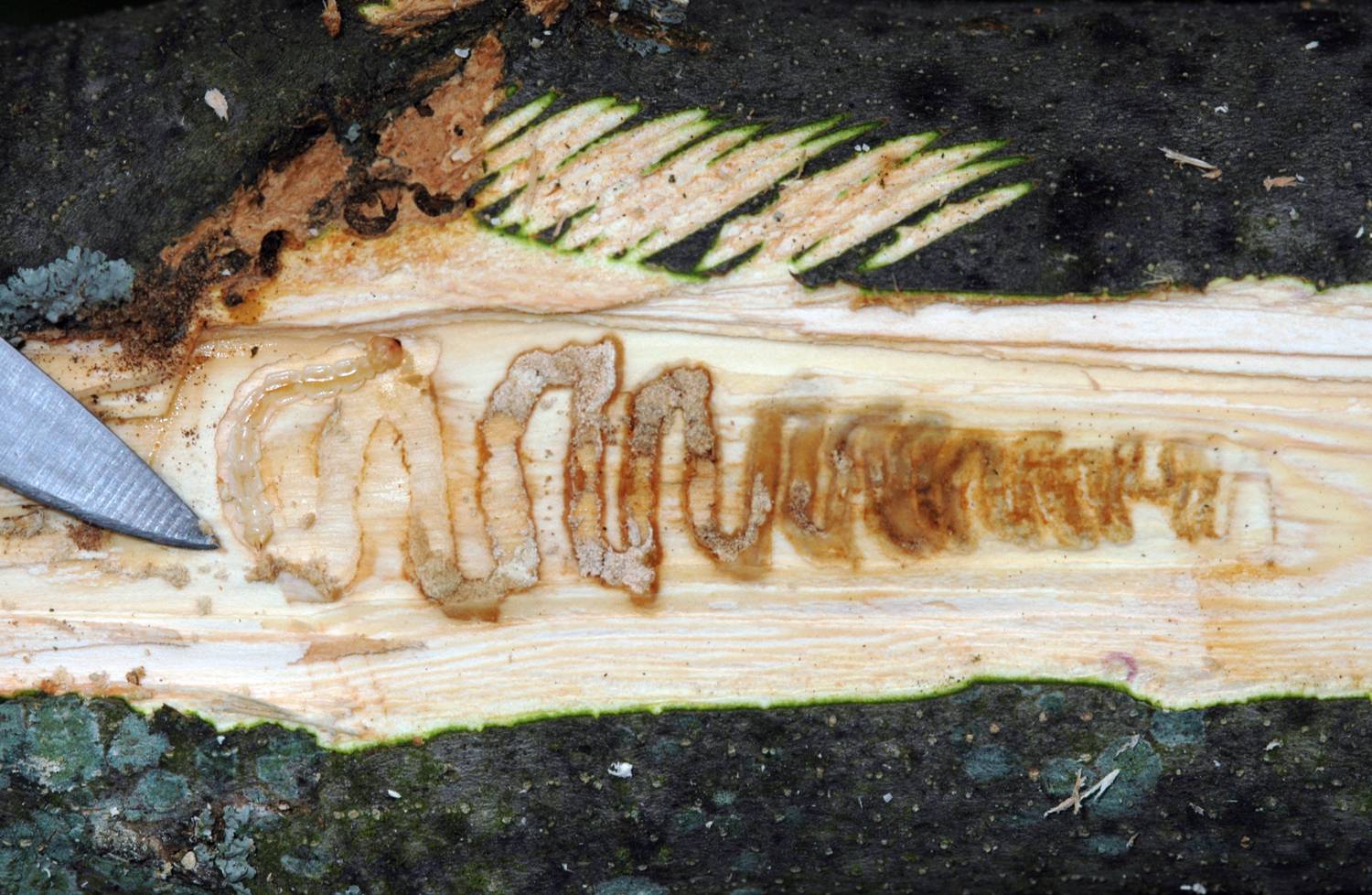

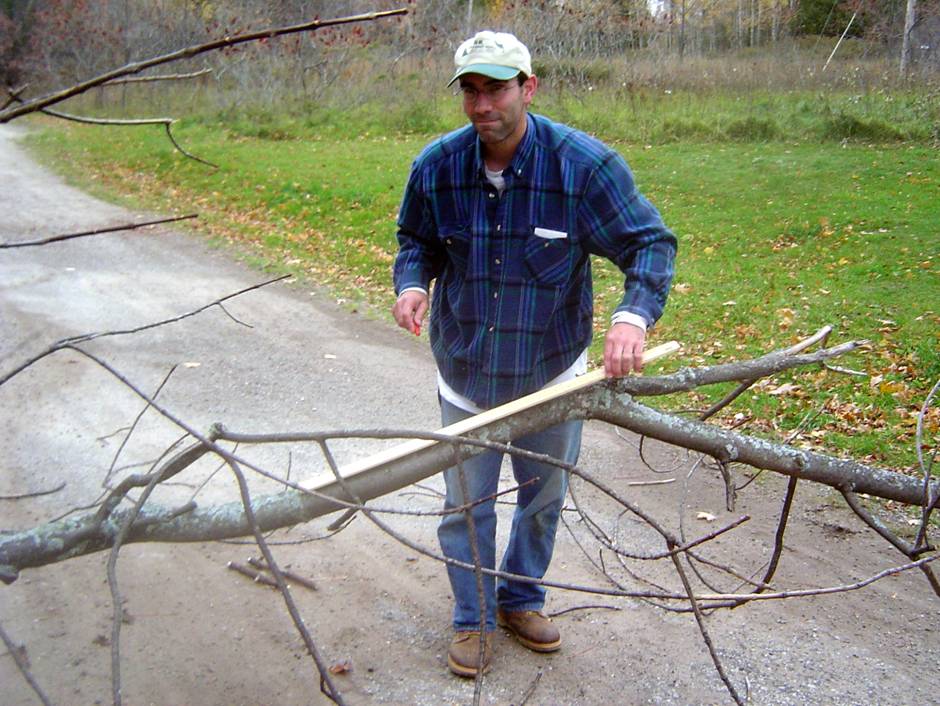


Measuring ash trees at Fayette State Park 11/4/05.

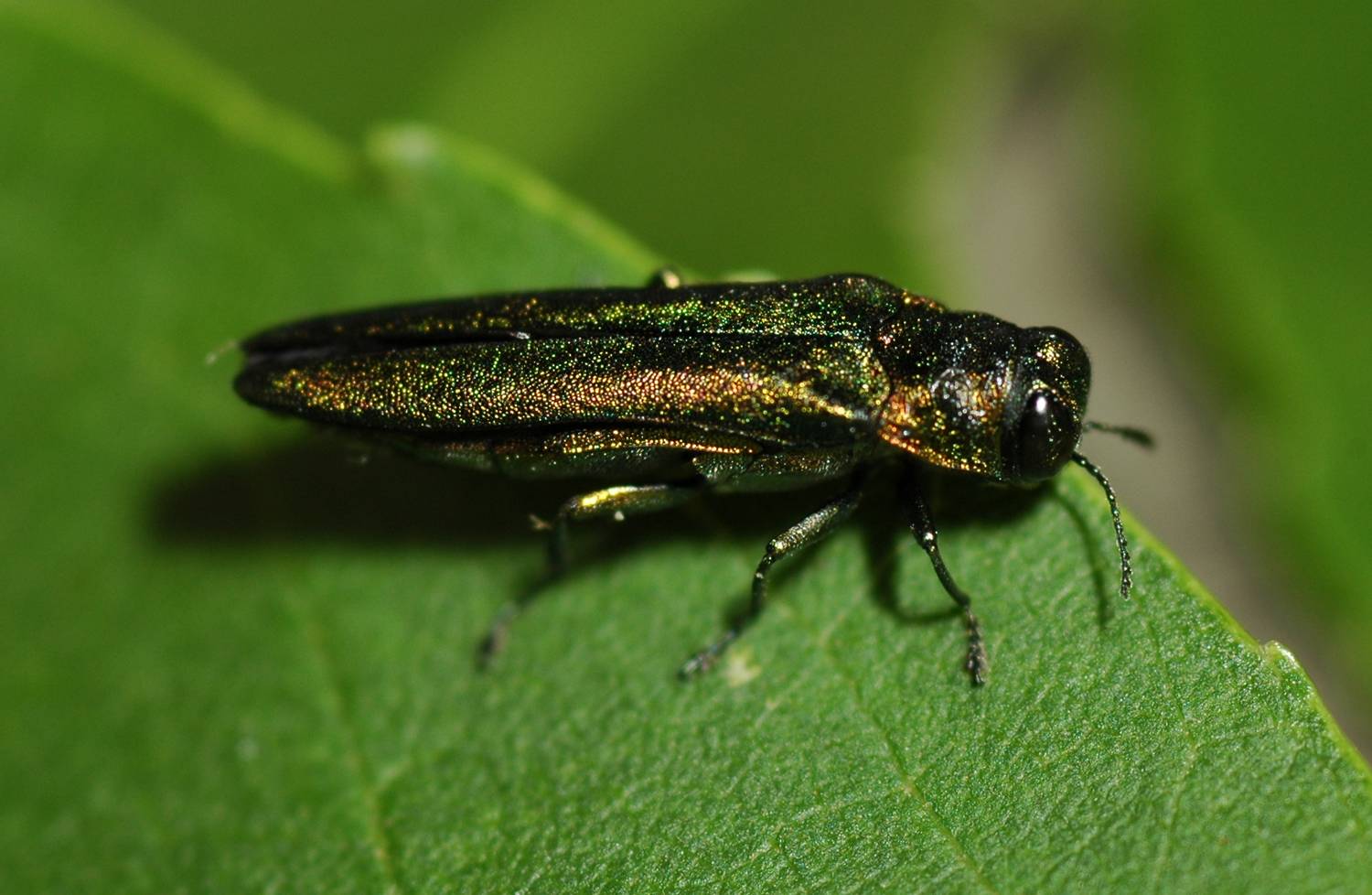



Example
Model With Real Data
Ash Species Trees per Acre is calculated from Stand
Table.
The following are real data of Fraxinus spp.
in a 102 acre stand in the Upper
Peninsula.
Note: Data
are ash trees only.
Therefore in this stand, to retain small trees and
remove 90% of the phloem the
diameter limit would be 6.7 (Remove all ash trees above 6.7 inches to take out 90% of the ash surface area).
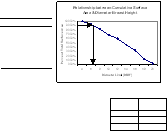
3.02%
0.5
20
9.93%
2
18
20.40%
5.1
16
12.59%
4.0
14
14.47%
6.0
12
8.24%
4.6
10
13.75%
10.7
8
11.40%
12.7
6
6.21%
10
4
% Surface Area
No. Trees/Acre
Diameter Class
2" Size Class Increments
4.3
99%
5.6
95%
9.1
75%
Diameter
Limit
To
Cut
% Surface Area
Removed
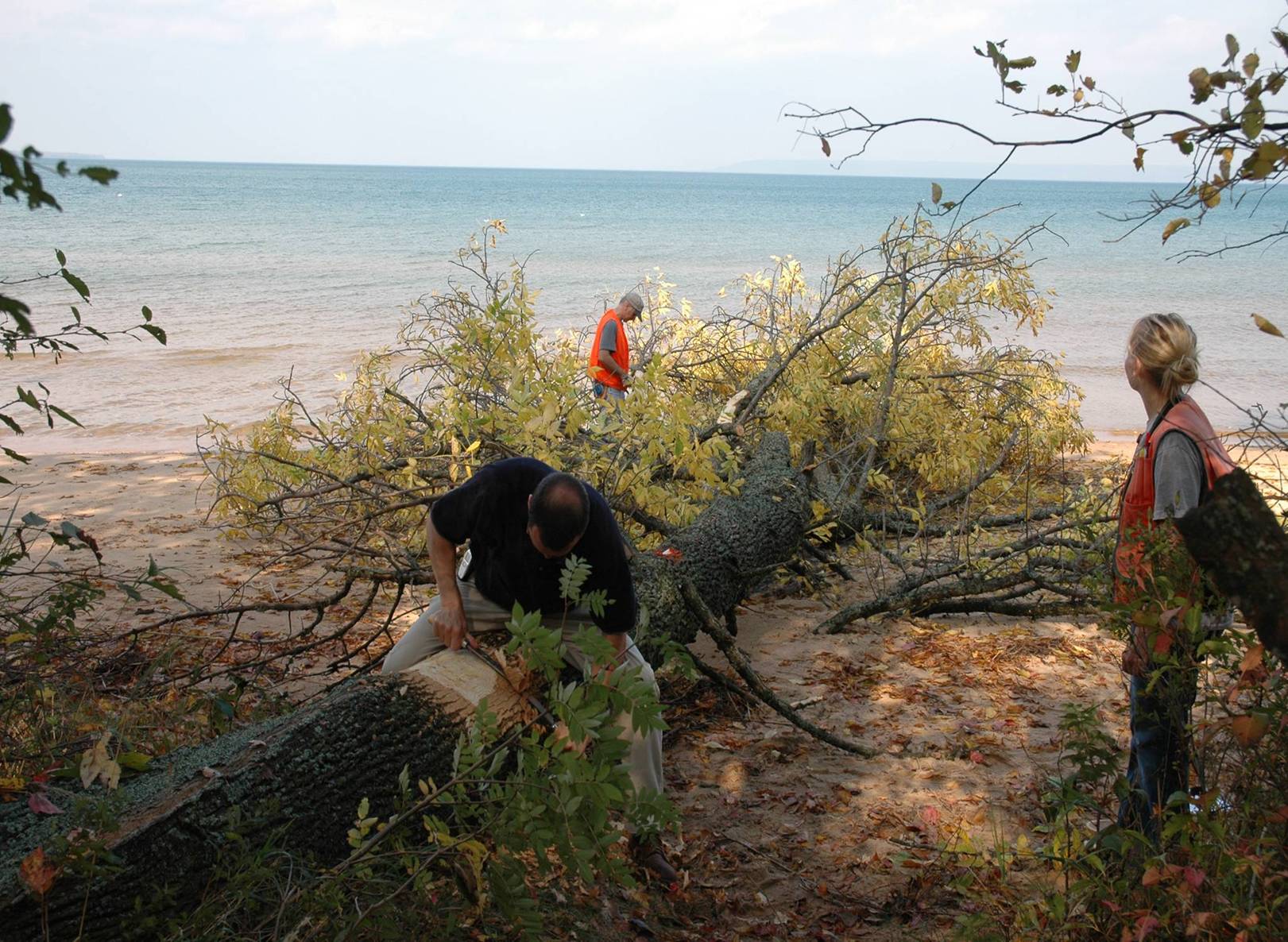

Collecting data from a felled tree.
The main boles and all branches
greater than 1 had their diameters
measured every 3 up the tree.


Other removal
percentages can be targeted
as shown, using the graph as a guide.
The model may also be
used to retain a target %
of large trees or using 1 diameter class depending on
management goals.

We also
anticipate making the data on ash
tree morphology available to other research
groups developing models of emerald
ash borer population dynamics in relation
to ash tree characteristics.